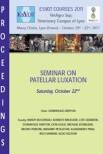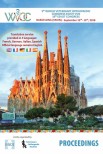Objectives: To describe the clinical presentations, outcomes and complications associated with the use of dorsal transiliac locking plates to stabilise sacral fractures in dogs and cats.
Materials and methods: A single-centre retrospective analysis of all patients that presented with sacral fractures between February 2017 and February 2023 that were managed surgically using paired dorsal transiliac locking plates. Twelve animals met the criteria for inclusion in a retrospective clinical case series. An owner questionnaire was employed to assess long-term outcomes.
Results: Eleven dogs and one cat with a mean age of 3.1 years (range 0.6 to 8.8) were included. Eleven patients presented following a motor vehicle accident and most were either non-ambulatory (n=8) or displayed severe unilateral hindlimb lameness (n=4). Nine sacral fractures were considered Anderson type II and three Anderson type V. The plate fixation was augmented with additional surgical stabilisation in 11 cases. Eleven patients were ambulatory at discharge and all cases healed uneventfully without major surgical or postoperative complications. Long-term follow-up (>60 days) was available in 10 animals at a mean of 694 days (range 65 to 1805) and owner-assessed outcomes via questionnaire were reported as good to excellent in all cases.
Clinical significance: The application of transiliac locking plates provided sufficient stability to facilitate sacral fracture healing with minimal clinical complications. This method represents a robust and safe option to stabilise sacral fractures in dogs and cats, offering an alternative to iliosacral lag screw fixation.









